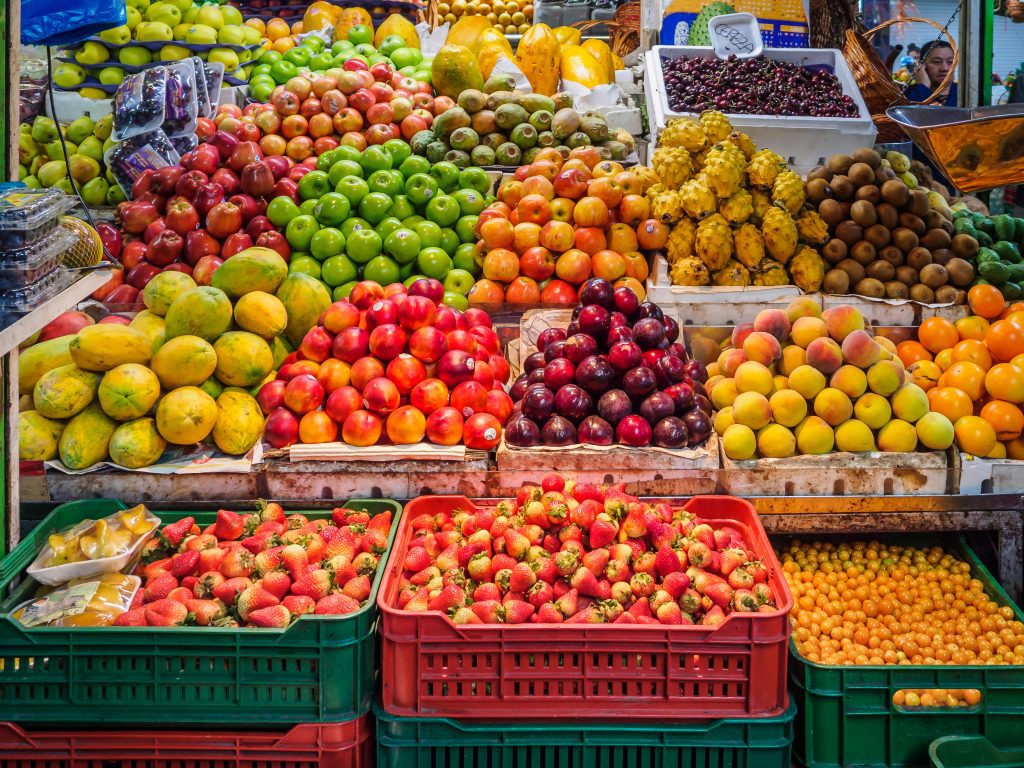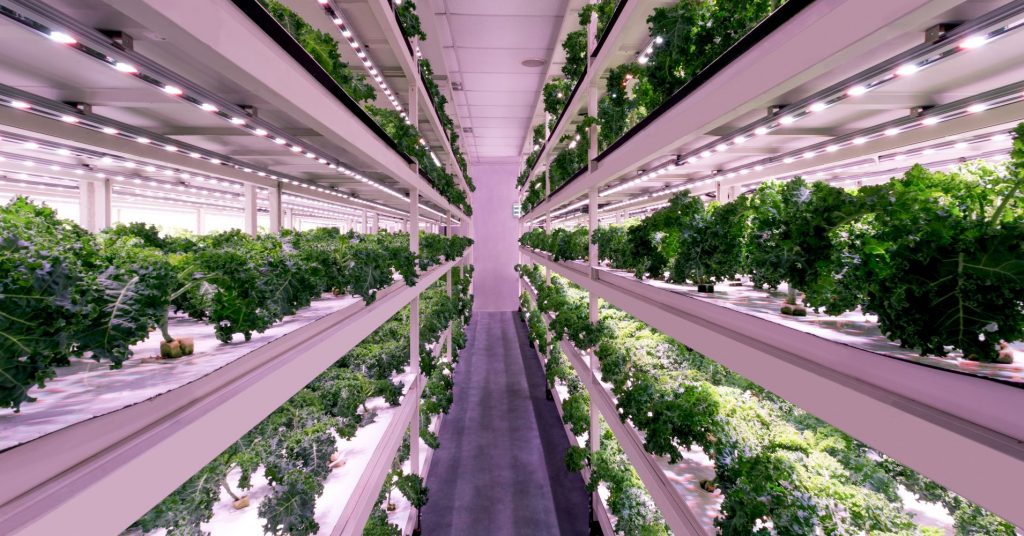Controlled Environment Agriculture (CEA) – which includes indoor agriculture and vertical farms – is a type of farming that controls various aspects of the environment such as temperature, humidity, light, carbon dioxide, and nutrients. This modern way of growing crops uses highly developed technology to understand and implement the best environment possible to enhance crop quality and yield.
1. Grow local, eat local

Many believe that around 50% of food is imported into the UK. However, in reality, it’s more like 80%. Fruit, veg, and other produce can be transported for hundreds of miles to get to our fridges. This has massive impacts on the environment by emitting tonnes of CO2 emissions into the atmosphere. CEA is a new and thriving industry that is allowing crops to be grown in the UK that wouldn’t otherwise survive our climate. Further to this, vertical farms are increasingly being built in abandoned warehouses or shipping containers in rural areas. This option is becoming more popular with customers, as they strive to be more environmentally conscious when purchasing foods. Companies like LettusGrow in Bristol and Growing Underground in London are growing produce and can therefore ship locally, reducing transport emissions and further damage to the environment.
2. Less land required

Traditional farms need vast amounts of arable land with good weather conditions. Controlled Environment Agriculture on the other hand requires less space and can be designed in any location, irrespective of the climate. On average, vertical farms yield 55 times more produce per unit of area compared to conventional farms. Various countries including Holland are leading the Vertical Farm changeover. The Netherlands are the 2nd largest exporter of food in the world, predominantly due to CEA. Using less space leaves the area to other uses including projects beneficial for the environment like reforestation.
3. Reduction in food waste

Climate change is exacerbating weather conditions resulting in more floods and droughts. Poor weather conditions can lead to huge amounts of food being wasted. On average, around 15% of food produced on farms is wasted due to labour shortages, weather conditions, or cosmetic imperfections. When food is wasted, it emits harmful gasses into the atmosphere, leading to global warming. CEA is scientifically brilliant in that it doesn’t have any of these issues. Controlled climate, no use of chemicals, and perfect growing conditions means very little crop is wasted.
4. Less labour intensive

Another salient benefit of CEA is that it demands a smaller number of workers. Traditional farms tend to rely on seasonal workers, whereby 67% are from Romania and Bulgaria, and 32% are from Czech Republic, Estonia, Hungary, Latvia, Lithuania, Poland, Slovenia and Slovakia. Due to Brexit and Covid-related restrictions, this could become an increasingly more difficult situation of recruiting and maintaining staff. Vertical farms on the other hand, tend to use fewer hands and more technology. As a result, they require fewer staff members.
5. More efficient water consumption

Water is a necessity for all types of farms. However, one of the main Controlled Environment Agriculture benefits is that it uses up to 95% less water than traditional crops because none is wasted. The water is clean and can be recycled and reused, reducing costs and minimising waste. In many parts of the world, water resources are limited. Reducing the need for intense water consumption by using CEA, food can be grown all-year round with positive economic and environmental impacts.